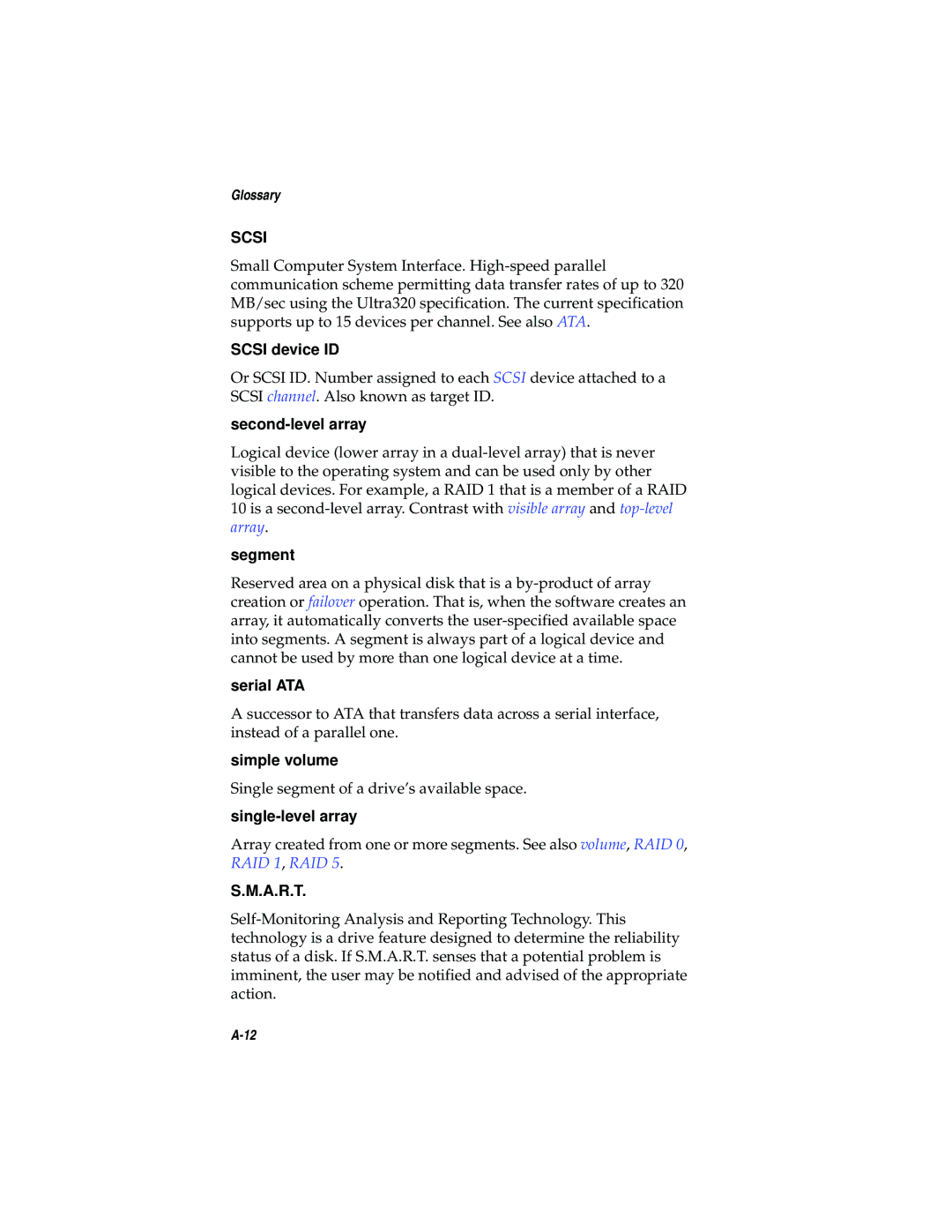Glossary
SCSI
Small Computer System Interface. High-speed parallel communication scheme permitting data transfer rates of up to 320 MB/sec using the Ultra320 specification. The current specification supports up to 15 devices per channel. See also ATA.
SCSI device ID
Or SCSI ID. Number assigned to each SCSI device attached to a SCSI channel. Also known as target ID.
second-level array
Logical device (lower array in a dual-levelarray) that is never visible to the operating system and can be used only by other logical devices. For example, a RAID 1 that is a member of a RAID
10is a second-level array. Contrast with visible array and top-level array.
segment
Reserved area on a physical disk that is a by-product of array creation or failover operation. That is, when the software creates an array, it automatically converts the user-specified available space into segments. A segment is always part of a logical device and cannot be used by more than one logical device at a time.
serial ATA
A successor to ATA that transfers data across a serial interface, instead of a parallel one.
simple volume
Single segment of a drive’s available space.
single-level array
Array created from one or more segments. See also volume, RAID 0, RAID 1, RAID 5.
S.M.A.R.T.
Self-Monitoring Analysis and Reporting Technology. This technology is a drive feature designed to determine the reliability status of a disk. If S.M.A.R.T. senses that a potential problem is imminent, the user may be notified and advised of the appropriate action.
